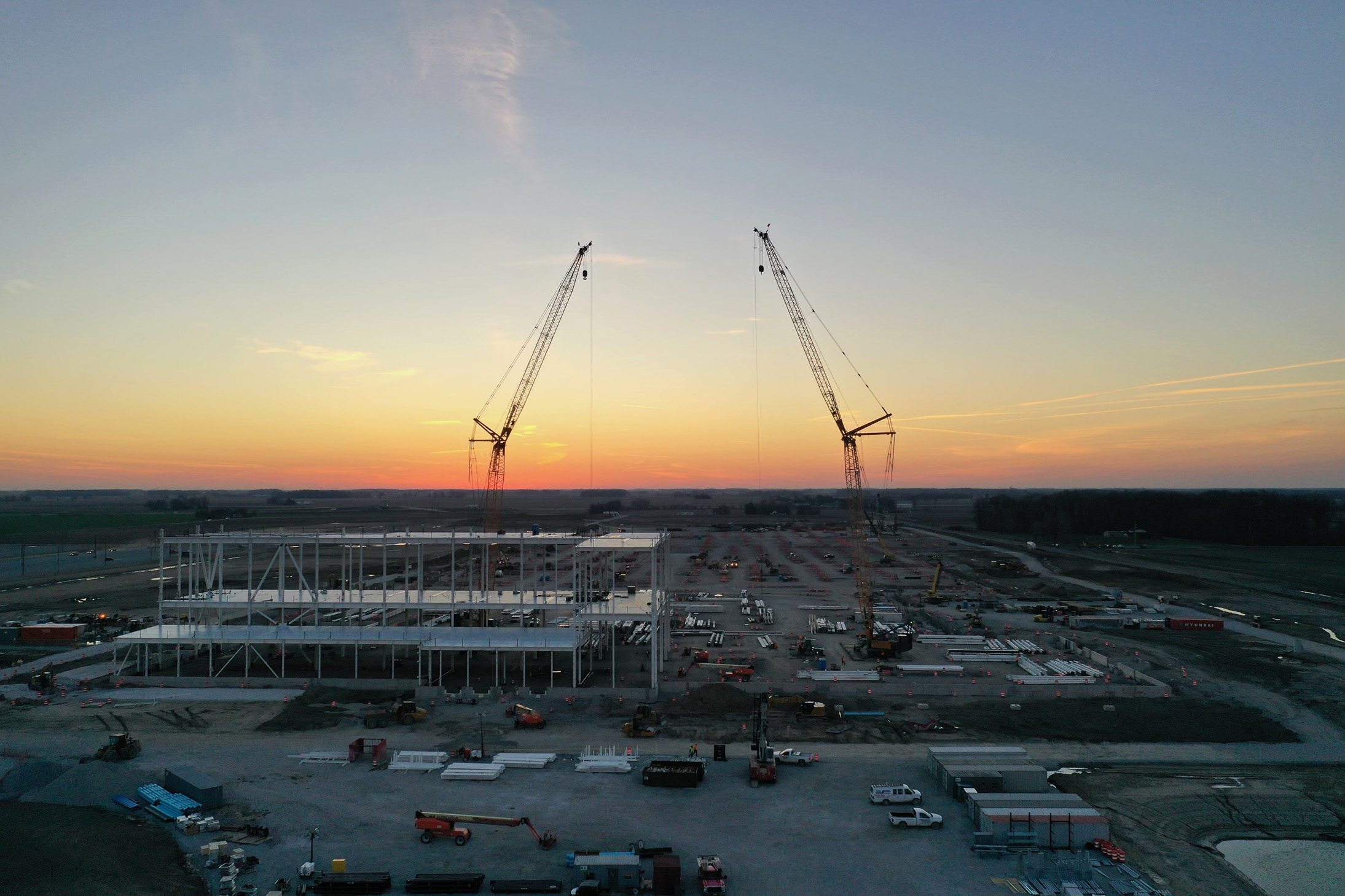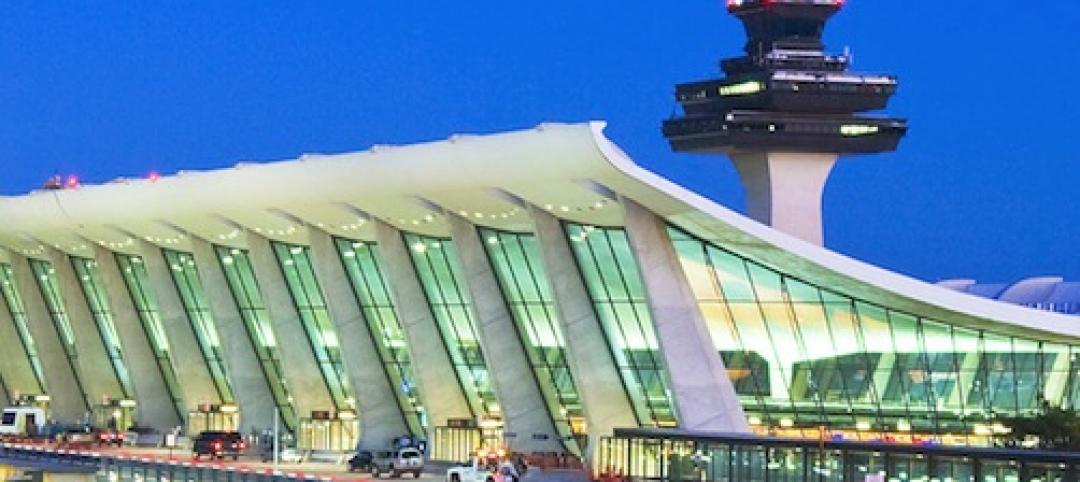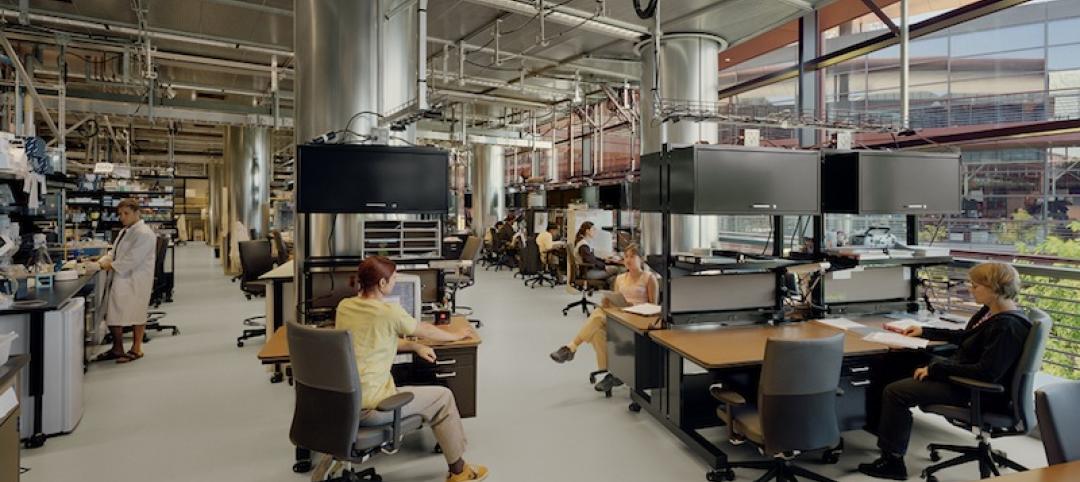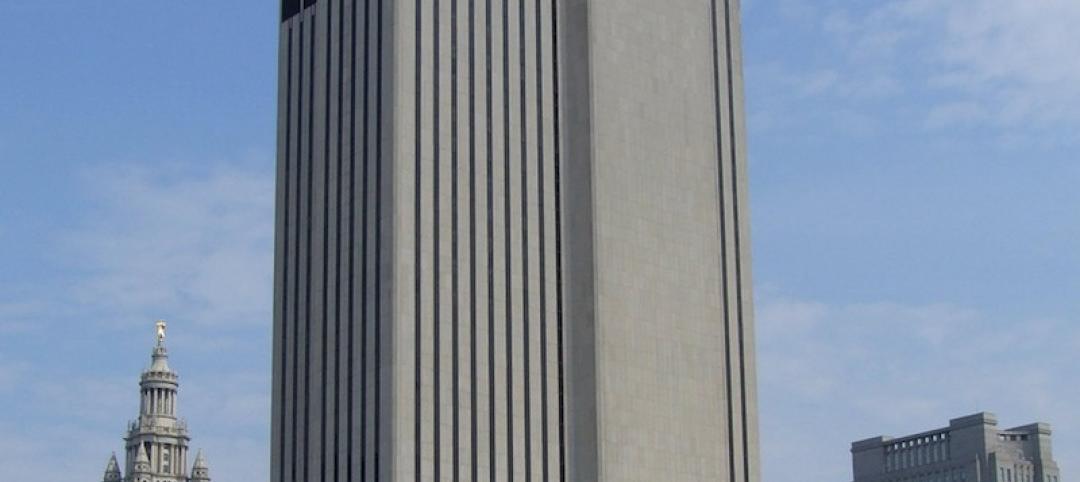As global automakers rush to manufacture batteries to meet the rising demand for electric vehicles, one architecture/engineering firm has been leading the change for over a decade.
Albert Kahn Associates have long been experts in the design of industrial manufacturing spaces. Albert himself referred to them as his “beautiful factories.” When a new industry emerged, the firm rose to the challenge of figuring out how a built environment could support a very complex manufacturing process. Kahn was the architect and engineer for one of the earliest battery manufacturing plants in the United States, Nissan’s Smyrna, Tennessee plant in 2012.
From an architectural standpoint, building codes have yet to catch up with the unique requirements of the battery manufacturing process. But where building codes fall short, there is more test data from independent sources. This data, in some cases, goes above and beyond code because of the special hazards that exist. We can make more informed choices based on the actual risks that exist. More than a decade ago, there was more uncertainty about what could happen inside a plant. People have learned from experience what is and what isn’t a problem. We have also seen the chemical makeup of the battery and the manufacturing processes change radically over time.
Today's battery manufacturing plants
One of the most significant changes seen in today’s battery plant is the full manufacturing process—from raw materials to the fully operational battery. Early battery plants imported the anode and cathode components which were typically manufactured in Asia. Now, plants are being designed with multiple level Mixing Buildings that use gravity-fed production processes to transform raw materials at the top of a building down through various phases to produce cathode and anode pastes at the bottom. For the Kahn team, this reminds us of Henry Ford’s Highland Park automobile factory designed in 1909, which featured a gravity-based assembly line to produce over one million Model Ts annually.
Hundreds of acres, millions of square feet, all designed and constructed at incredible speed.
It’s no surprise that automotive production schedules demand quick construction. Teams use the design-build delivery model, which proves even more challenging given the ever-developing technology and process for battery production. Owners, contractors, and design partners need to go into the project understanding that change will happen. The important thing for any owner is to choose agile partners that know how to collaborate when the stakes are high.
Most of today’s battery expertise comes from Asia. Large companies like LG, Panasonic, and Samsung partner with auto manufacturers to construct battery manufacturing facilities. Working with international teams requires cultural intelligence and patience to overcome language barriers and differences in building codes and workforce norms.
We have found in-person work sessions to be the most effective. Technology is helpful, but there is no substitute for working in person. For weeks at a time, members from the owner’s team joined the construction team in Kahn’s offices. Getting to know colleagues over shared meals and bridging cultural differences. Most beneficial was reviewing physical building materials together in real-time. Assessing materials together in the same room transcended the nuances of translation and allowed for a deeper understanding and quicker decision-making. Construction partners are also in the office and part of regular discussions. When the design and engineering team proposes a solution, the construction team can quickly advise on more expedient and cost-effective ways to achieve the desired result.
Every automotive manufacturer is pushing to produce batteries to support the move to vehicle electrification. As a result, there is an incredible amount of competition. Suppliers for HVAC, electrical, and other equipment are experiencing lead times over one year, meaning that equipment needs to be pre-purchased well before the design work gets off the ground.
An engineering feat
Battery plants require a unique environment inside their manufacturing areas. The Mixing Buildings, for instance, require no more than 3% relative humidity while the balance of the manufacturing space is at 1%. These dry rooms require mechanical systems with desiccant dehumidification equipment to extract moisture from the air, but these are energy-intensive HVAC systems that consume significant electrical power. To put it into perspective, these battery plants require approximately three times the cooling capacity of a regular manufacturing facility of the same square footage.
Similarly, from an electrical engineering standpoint, battery plants are two to three times the electric load of a typical automotive assembly plant. Engineers need to understand the actual energy requirements for the building and the process, because you cannot ask utility companies for more megawatts than you plan to use, or you will be faced with a hefty penalty.
Safety is imperative
Keeping employees safe is one of the biggest concerns for the team throughout the design and engineering process. Battery plants can be enormous facilities, with some areas housing hazardous materials. Exit passageways or rated corridors throughout the building are one way to reduce the distance employees need to travel to get to a safe location in the event of an emergency. It is down to the expertise of the team to find a location for these corridors that does not interrupt the manufacturing process. 3D fire simulations during the design process help determine how to keep workers safe so they can exit in an emergency.
A battery manufacturing campus may also include test facilities, where manufactured products undergo rigorous testing, including purposeful battery destruction, to validate quality and safety. This building needs to incorporate even more safety features like pressure relief walls so that in the event of a successful destruction or explosion of a battery, the walls contain the event without damaging other parts of the building.
Our understanding of batteries and the battery manufacturing plant continues to grow. Albert Kahn Associates is excited about the future of alternative energy and more developments to reuse and recycle automotive batteries, which need to continue alongside the construction of new manufacturing plants.
Peter G. Lynde, PE, is a Principal and Senior Vice President at Albert Kahn Associates, Inc. He can be reached at Peter.Lynde@akahn.com. Shelli Jaeger, AIA, NCARB, LEED AP, is a Senior Architect at Albert Kahn Associates, Inc.
Related Stories
| Apr 30, 2013
Tips for designing with fire rated glass - AIA/CES course
Kate Steel of Steel Consulting Services offers tips and advice for choosing the correct code-compliant glazing product for every fire-rated application. This BD+C University class is worth 1.0 AIA LU/HSW.
| Apr 24, 2013
Los Angeles may add cool roofs to its building code
Los Angeles Mayor Antonio Villaraigosa wants cool roofs added to the city’s building code. He is also asking the Department of Water and Power (LADWP) to create incentives that make it financially attractive for homeowners to install cool roofs.
| Apr 5, 2013
Lack of national standards on design of bioterror labs creates higher risk for accidents, panel says
U.S. labs that conduct research on bioterror germs such as anthrax are at risk for accidents because they do not have uniform design and operation standards, according to a Congressional investigative group.
| Apr 3, 2013
5 award-winning modular buildings
The Modular Building Institute recently revealed the winners of its annual Awards of Distinction contest. There were 42 winners in all across six categories. Here are five projects that caught our eye.
| Mar 29, 2013
PBS broadcast to highlight '10 Buildings That Changed America'
WTTW Chicago, in partnership with the Society of Architectural Historians, has produced "10 Builidngs That Changed America," a TV show set to air May 12 on PBS.
| Mar 27, 2013
RSMeans cost comparisons: college labs, classrooms, residence halls, student unions
Construction market analysts from RSMeans offer construction costs per square foot for four building types across 25 metro markets.
| Mar 24, 2013
World's tallest data center opens in New York
Sabey Data Center Properties last week celebrated the completion of the first phase of an adaptive reuse project that will transform the 32-story Verizon Building in Manhattan into a data center facility. When the project is completed, it will be the world's tallest data center.
Building Enclosure Systems | Mar 13, 2013
5 novel architectural applications for metal mesh screen systems
From folding façades to colorful LED displays, these fantastical projects show off the architectural possibilities of wire mesh and perforated metal panel technology.
| Feb 26, 2013
Tax incentive database for reflective roofs available
The Roof Coatings Manufacturers Association (RCMA) and the Database of State Incentives for Renewables & Efficiency (DSIRE) created a database of current information on rebates and tax credits for installing reflective roofs.














